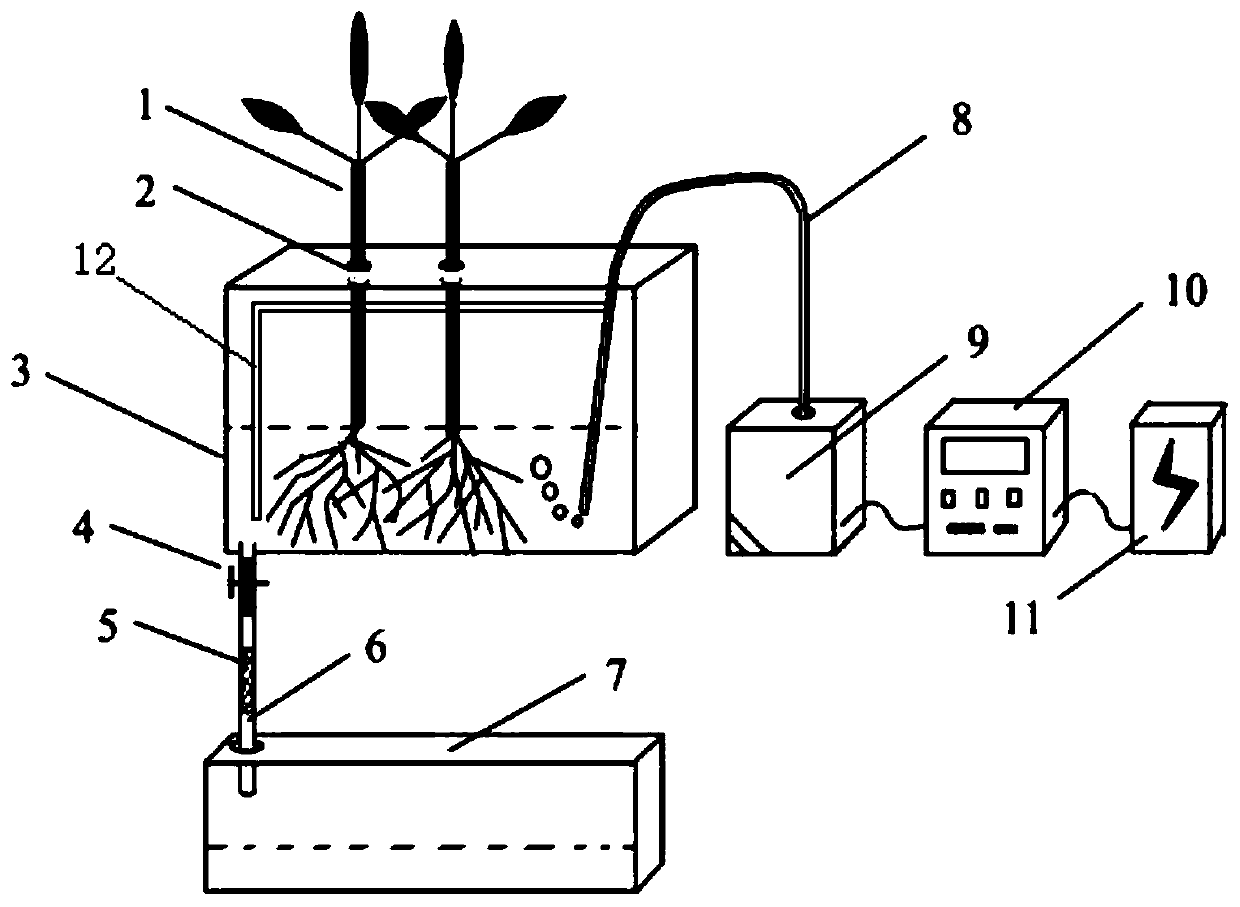Method for collection and extraction of disease-resistant rootstock root exudate
A technology for root exudates and rootstocks, which can be applied in botanical equipment and methods, chemicals for biological control, animal repellents, etc. The operation steps are simple and easy to operate, reduce root damage, and alleviate the effect of high incidence of bacterial wilt
- Summary
- Abstract
- Description
- Claims
- Application Information
AI Technical Summary
Problems solved by technology
Method used
Image
Examples
Embodiment 1
[0027] The collection and extraction of the root exudates of the rootstock "Fanzhen No. 1" are carried out as follows:
[0028] (1) 50-hole plug trays (62mm×30mm) were used for seedling cultivation of the tested species, and the seedling-raising substrate was prepared from the following raw materials in parts by weight: 15 parts of peat, 5 parts of coconut bran, 5 parts of perlite, 1 part of vermiculite and mushroom residue 15 parts of fermented product;
[0029] (2) After sowing, when the seedling grows to three leaves and one heart, it is transferred to a nutrient bowl (80mm × 65mm) for cultivation, and the substrate is consistent with the step 1, and the water and fertilizer management is carried out uniformly;
[0030] (3) After the seedlings grow to the budding stage, the root exudates are collected, and 10 strong seedlings whose growth is basically the same are taken, and the seedlings are carefully taken out from the nutrient bowl, and the roots are avoided as much as p...
Embodiment 2
[0035] The rootstock "Eggplant No. 21" is collected and extracted, and the implementation method is as follows:
[0036] (1) 50-hole plug trays (62mm×30mm) were used for seedling cultivation of the tested varieties, and the seedling-raising substrate was prepared from the following raw materials in parts by weight: 20 parts of peat, 15 parts of coconut bran, 15 parts of perlite, 5 parts of vermiculite and mushroom residue 5 parts of fermented product;
[0037] (2) After sowing, when the seedling grows to three leaves and one heart, it is transferred to a nutrient bowl (80mm × 65mm) for cultivation, and the substrate is consistent with the step 1, and the water and fertilizer management is carried out uniformly;
[0038] (3) After the seedlings grow to the budding stage, the root exudates are collected, and 10 strong seedlings whose growth is basically the same are taken, and the seedlings are carefully taken out from the nutrient bowl, and the roots are avoided as much as poss...
PUM
 Login to View More
Login to View More Abstract
Description
Claims
Application Information
 Login to View More
Login to View More - R&D
- Intellectual Property
- Life Sciences
- Materials
- Tech Scout
- Unparalleled Data Quality
- Higher Quality Content
- 60% Fewer Hallucinations
Browse by: Latest US Patents, China's latest patents, Technical Efficacy Thesaurus, Application Domain, Technology Topic, Popular Technical Reports.
© 2025 PatSnap. All rights reserved.Legal|Privacy policy|Modern Slavery Act Transparency Statement|Sitemap|About US| Contact US: help@patsnap.com

